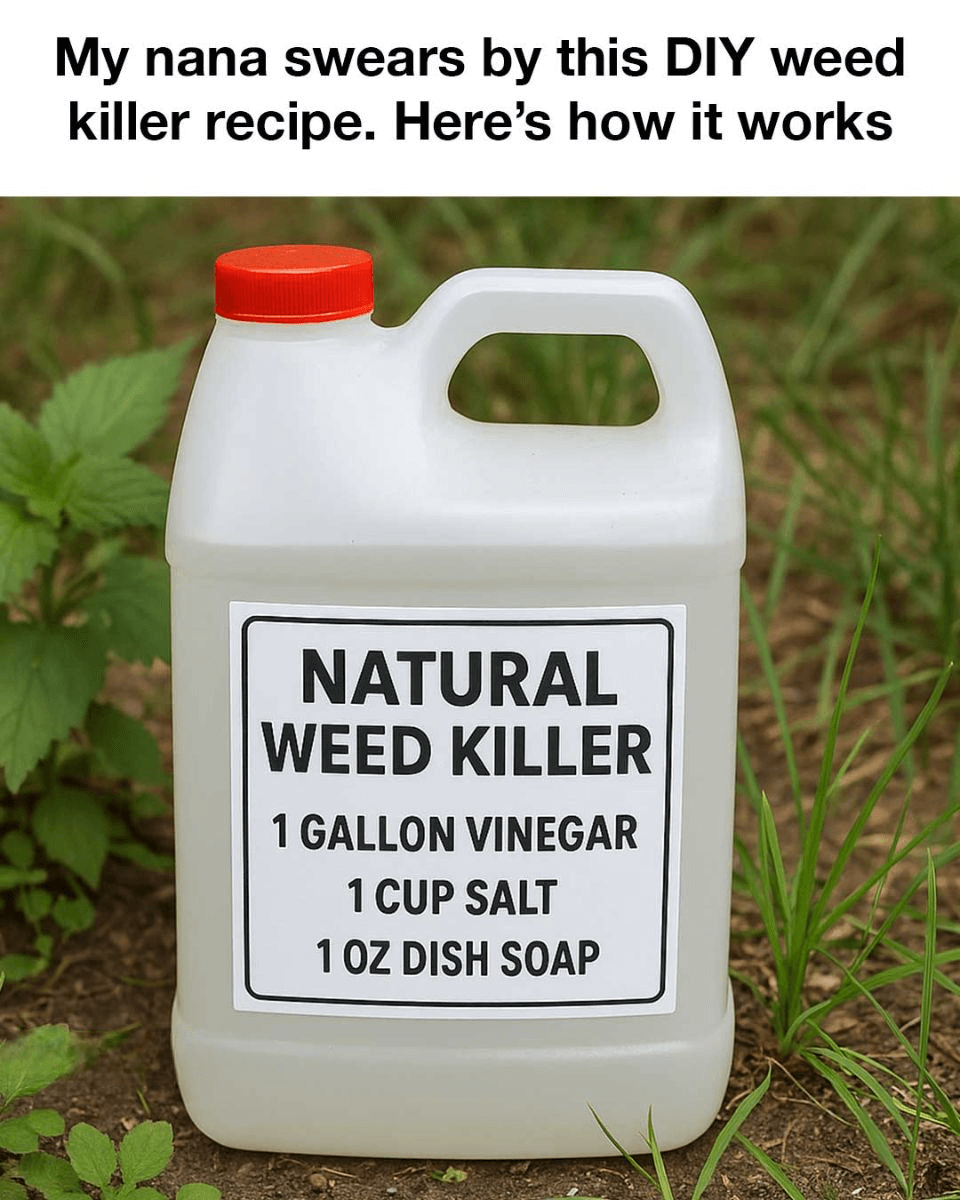Weeds are a constant challenge for gardeners, and while commercial weed killers are widely available, many come with harmful chemicals that can negatively impact both the environment and the plants you want to preserve. Because of this, a growing number of people are turning to natural methods. One such solution has been passed down through generations in my family. My nana, a lifelong gardener, relies on her homemade weed killer recipe that is both effective and environmentally gentle.
Her mixture uses basic household ingredients, making it not only cost-effective but also safer to use. This DIY approach allows gardeners to know exactly what they’re spraying in their yards. In this article, you’ll learn about where this recipe came from, how its components work together, and how to use it in your own garden.
1. Where the Recipe Comes From
Nana’s DIY weed killer dates back to a time when chemical herbicides were either too expensive or unavailable to most families. People turned to household staples, which led to the discovery of this effective blend. The recipe includes three key ingredients: vinegar, salt, and dish soap. Nana’s standard mix is 1 gallon of white vinegar, 1 cup of salt, and 1 tablespoon of dish soap. She’s used it for years with consistent success in controlling weeds.
2. The Key Ingredients Explained
The effectiveness of this weed killer comes from the way its three ingredients work together. White vinegar, typically with 5% acetic acid, is the main component that damages plant leaves on contact. Salt enhances this effect by dehydrating the plant and preventing it from absorbing moisture. Dish soap acts as a binding agent, allowing the solution to stick to the weed’s surface so the active ingredients can work more effectively.
3. How Vinegar Helps Eliminate Weeds
Vinegar kills weeds by breaking down cell membranes with its acetic acid content, causing the plant to dry out and eventually die. It’s particularly effective on young weeds with softer leaves. While stronger vinegar (with more than 5% acetic acid) can be more effective, household vinegar works well for everyday gardening. Since vinegar doesn’t discriminate between weeds and desired plants, it must be applied carefully.
4. Salt’s Role in the Formula
Salt dehydrates plant cells, which leads to withering and death. When used along with vinegar, it helps ensure that weeds can’t recover from the initial damage. However, overuse of salt can damage soil and affect future plant growth. For that reason, it’s best used on areas where you don’t plan to plant anything, like driveways or walkways.
5. The Importance of Dish Soap
Dish soap is included to help the solution spread evenly and stick to the plant’s leaves. This increases contact between the weeds and the vinegar-salt mixture, boosting its effectiveness. The soap helps prevent the solution from simply rolling off the leaves or being quickly washed away.
6. How to Make the Weed Killer at Home
To prepare Nana’s weed killer, gather the following: 1 gallon of white vinegar, 1 cup of salt, and 1 tablespoon of liquid dish soap. Pour the vinegar into a large container or spray bottle. Add the salt and stir until fully dissolved, which may take a few minutes. Then, stir in the dish soap gently. Once everything is well-mixed, the solution is ready for use. Apply it on dry, sunny days for the best results.
7. Best Way to Apply It
Use a spray bottle or garden sprayer to evenly coat the leaves of unwanted weeds. Make sure you don’t spray any desirable plants, as the solution is non-selective and will damage them. For optimal results, apply when temperatures are above 70°F and the sun is shining, which helps activate the solution. If necessary, repeat applications after rain or if weeds persist.
8. Use With Care and Environmental Awareness
Though made with natural ingredients, this weed killer should still be handled with caution. Wear gloves and eye protection during preparation and use. Keep in mind the potential for salt to build up in the soil, especially in areas where you may want to plant in the future. Avoid spraying near water sources to reduce the risk of contamination.
9. How It Stacks Up Against Commercial Options
Store-bought weed killers often contain synthetic ingredients that can pose risks to people, pets, and the ecosystem. While they may offer quicker or longer-lasting results, they can also harm the soil and surrounding plants. Nana’s DIY option offers a more sustainable choice that avoids these downsides. Although it might require more frequent application, it’s a safe, chemical-free alternative.
10. Positive Feedback From Gardeners
Many home gardeners have adopted this method with great success. One person shared that after two applications, her flower beds were clear of weeds and thriving. Another noted that it worked wonders on weeds growing through cracks in her pavement. These stories reflect how well this natural solution performs when used correctly.
11. Tips to Get the Most From This Weed Killer
For maximum effectiveness, apply the mixture during peak sunlight hours. This helps speed up the drying and killing process. If weeds are particularly stubborn, you might increase the vinegar strength or slightly boost the salt amount. However, always be cautious about how much salt you use to protect soil health. Regular checks and repeat treatments may be necessary throughout the season to maintain a weed-free garden.
